Elevated Red Blood Cells and Hematocrit: Causes, Symptoms, and Treatment Options
What are the causes of elevated red blood cells and hematocrit. How is polycythemia diagnosed and treated. What are the potential complications of high red blood cell count.
Understanding Polycythemia: An Overview of Elevated Red Blood Cell Counts
Polycythemia, also known as erythrocytosis, is a condition characterized by an abnormally high concentration of red blood cells in the bloodstream. This increase in red blood cell mass is typically reflected by elevated hemoglobin and hematocrit levels on laboratory tests. While a certain level of red blood cells is essential for carrying oxygen throughout the body, an excess can lead to serious health complications.
The normal range for red blood cell mass is generally considered to be up to 36 ml/kg in males and 32 ml/kg in females. However, these values can vary slightly based on factors such as altitude, ethnicity, and geographical location. As a general guideline, healthy adult males typically have hemoglobin levels around 16 g/dL (±2 g/dL) and a hematocrit of 47% (±6%). For menstruating females, these values are usually lower, with hemoglobin around 13 g/dL (±2 g/dL) and hematocrit at 40% (±6%).

Polycythemia in Newborns
It’s worth noting that polycythemia in newborns is defined differently. In infants, a central venous hematocrit exceeding 65% or a hemoglobin value above 22 g/dL is considered polycythemia. This condition in newborns often occurs as a compensatory mechanism due to the relative tissue-level hypoxia experienced in the intrauterine environment.
Types of Polycythemia: Distinguishing Between True and Spurious Cases
Polycythemia can be broadly categorized into two main types: spurious polycythemia and true polycythemia. Understanding the difference between these types is crucial for proper diagnosis and treatment.
Spurious Polycythemia
Spurious polycythemia occurs due to a decrease in plasma volume rather than an actual increase in red blood cell mass. This condition can be caused by severe dehydration resulting from fluid loss, such as in cases of severe diarrhea or vomiting. Another example is Gaisbock syndrome, typically seen in obese, hypertensive males, often exacerbated by smoking, excessive alcohol consumption, and the use of diuretics.
:max_bytes(150000):strip_icc()/hemoglobin-level-5211543-DD_Final-5839bd4fad49464584cc69c5460cb0eb.jpg)
True Polycythemia
True polycythemia involves an actual increase in red blood cell mass. It can be further classified based on serum erythropoietin (EPO) levels:
- Low serum EPO levels (Primary polycythemia): This category includes conditions like polycythemia vera, a myeloproliferative disorder.
- High serum EPO levels (Secondary polycythemia): This type can be caused by various factors, including high altitude, respiratory disorders, cyanotic heart diseases, renal disorders, and certain tumors.
Causes of Secondary Polycythemia: When the Body Overproduces Red Blood Cells
Secondary polycythemia occurs when the body increases red blood cell production in response to various stimuli. Some common causes include:
- High altitude exposure: The body produces more red blood cells to compensate for lower oxygen levels at higher elevations.
- Respiratory disorders: Conditions like chronic obstructive pulmonary disease (COPD), Pickwickian syndrome, and uncontrolled asthma can lead to increased red blood cell production.
- Cyanotic heart diseases: Heart defects that result in right-to-left shunts can trigger increased red blood cell production.
- Renal disorders: Conditions such as renal cysts, kidney cancer, renal artery stenosis, and certain glomerular diseases can stimulate erythropoietin production.
- Elevated carboxyhemoglobin: This is often seen in smokers or individuals exposed to high levels of carbon monoxide.
- Hemoglobinopathies: Certain genetic disorders affecting hemoglobin structure can lead to polycythemia.
- EPO-secreting tumors: Some tumors, including hepatomas and cerebellar hemangiomas, can produce excess erythropoietin.
- Iatrogenic causes: Use of erythropoietin analogs, anabolic steroids, or testosterone replacement therapy can result in polycythemia.
Polycythemia Vera: A Closer Look at the Myeloproliferative Disorder
Polycythemia vera (PV) is a specific subtype of polycythemia and falls under the category of myeloproliferative disorders. It is an acquired condition characterized by the overproduction of red blood cells, and in some cases, white blood cells and platelets as well.

PV is notable for its association with the Philadelphia chromosome negative status, distinguishing it from other myeloproliferative disorders like chronic myeloid leukemia. The condition primarily affects older adults, with a median age of onset around 60 years. It shows a slight male preponderance, with a male-to-female ratio of approximately 2:1.
Genetic Factors in Polycythemia Vera
Recent research has identified specific genetic mutations associated with polycythemia vera. The most common is the JAK2 V617F mutation, present in over 95% of PV cases. This mutation leads to constitutive activation of the JAK-STAT signaling pathway, resulting in uncontrolled cell proliferation.
Diagnosing Polycythemia: Key Tests and Procedures
Diagnosing polycythemia involves a combination of clinical evaluation, laboratory tests, and sometimes imaging studies. The diagnostic process typically includes:
- Complete blood count (CBC): This test measures hemoglobin, hematocrit, and red blood cell count.
- Serum erythropoietin levels: To distinguish between primary and secondary polycythemia.
- JAK2 mutation testing: For suspected polycythemia vera cases.
- Bone marrow biopsy: To evaluate bone marrow cellularity and exclude other myeloproliferative disorders.
- Oxygen saturation measurement: To identify hypoxia-induced polycythemia.
- Imaging studies: Such as chest X-rays or echocardiograms to identify underlying cardiopulmonary diseases.
How is polycythemia diagnosed in patients with borderline elevated hemoglobin or hematocrit levels? In such cases, physicians may employ additional tests such as red cell mass measurement using radioactive isotopes. This can help differentiate between true polycythemia and relative polycythemia due to plasma volume contraction.
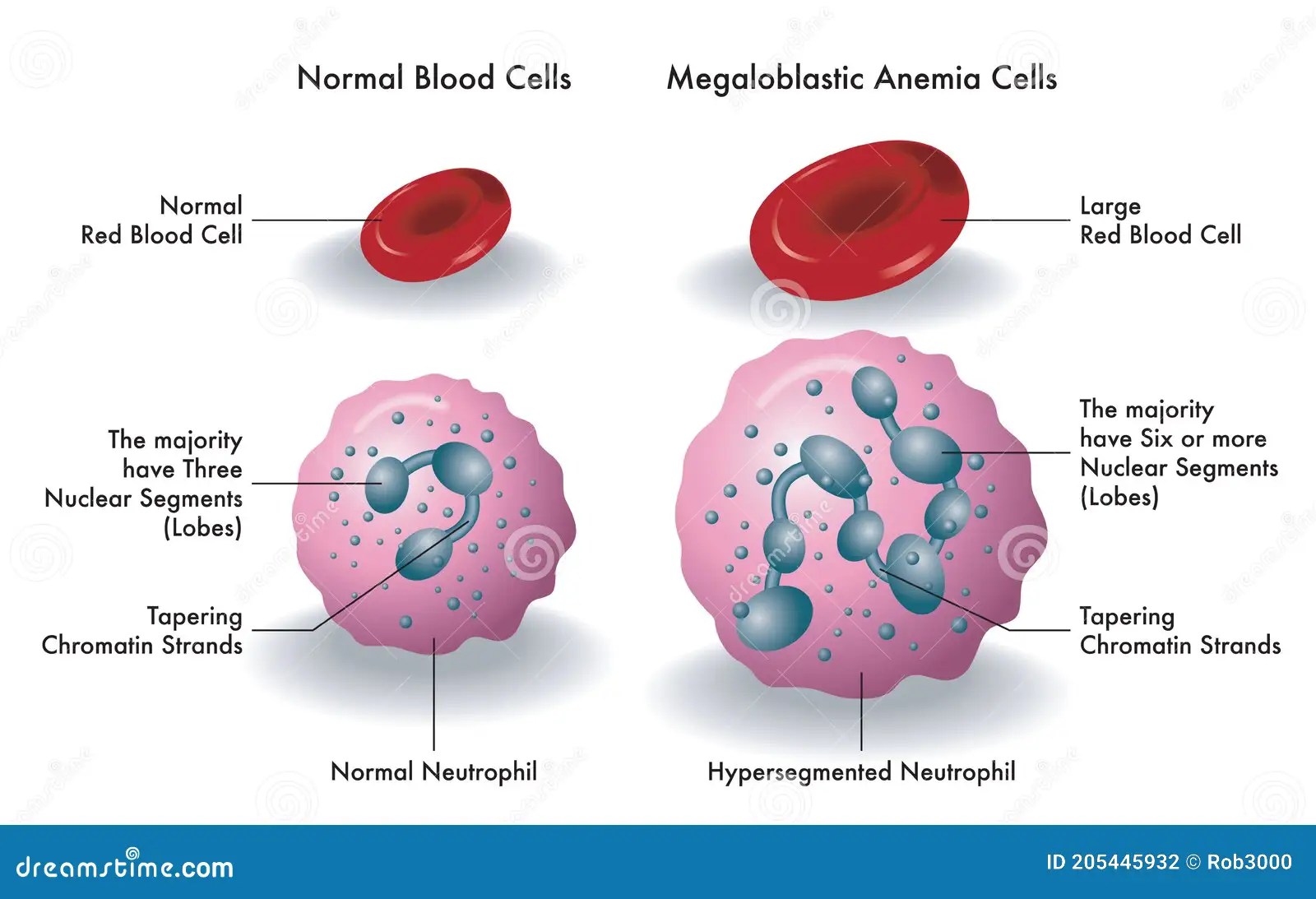
Treatment Approaches for Polycythemia: Managing Elevated Red Blood Cell Counts
The treatment of polycythemia varies depending on the underlying cause and severity of the condition. The primary goals of treatment are to reduce the risk of thrombotic events and manage symptoms.
Treatment Options for Secondary Polycythemia
For secondary polycythemia, treatment focuses on addressing the underlying cause:
- Treating respiratory disorders or heart conditions
- Discontinuing medications that may be causing polycythemia
- Smoking cessation for those with elevated carboxyhemoglobin levels
- Relocating to lower altitudes for altitude-induced polycythemia
Management of Polycythemia Vera
Treatment for polycythemia vera typically involves a combination of approaches:
- Phlebotomy: Regular blood removal to reduce hematocrit levels
- Low-dose aspirin: To reduce the risk of thrombotic events
- Cytoreductive therapy: Medications like hydroxyurea or interferon-alpha to suppress bone marrow activity
- JAK2 inhibitors: Such as ruxolitinib for patients with severe symptoms or those who don’t respond to other treatments
- Management of cardiovascular risk factors: Including blood pressure control and cholesterol management
What is the target hematocrit level for patients undergoing treatment for polycythemia vera? The goal is typically to maintain a hematocrit below 45% in men and below 42% in women. This range has been shown to significantly reduce the risk of thrombotic events.
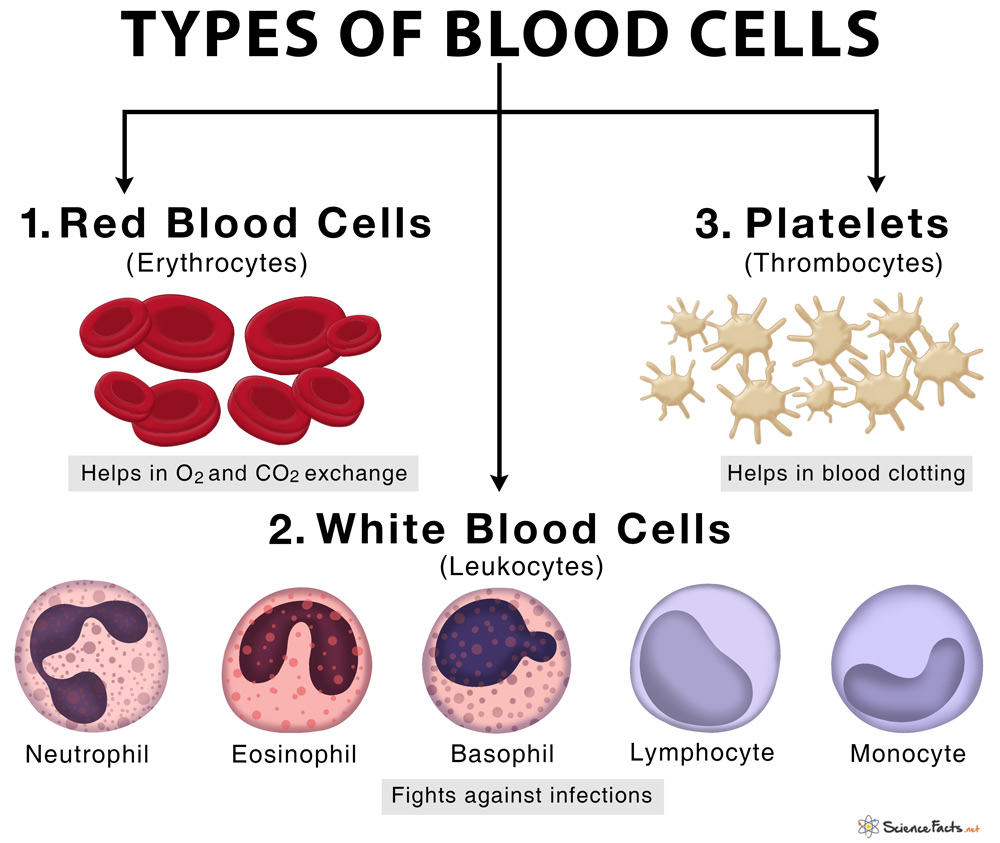
Complications of Polycythemia: Understanding the Risks of Elevated Red Blood Cells
Polycythemia, if left untreated or poorly managed, can lead to several serious complications:
- Thrombosis: The most significant risk is the formation of blood clots, which can lead to stroke, heart attack, or deep vein thrombosis.
- Hyperviscosity syndrome: Increased blood thickness can impair circulation, especially in small blood vessels.
- Splenomegaly: Enlargement of the spleen is common in polycythemia vera.
- Progression to myelofibrosis: In some cases of polycythemia vera, the condition can evolve into myelofibrosis, characterized by bone marrow scarring.
- Leukemic transformation: There’s a small risk of polycythemia vera progressing to acute leukemia.
- Pruritis: Severe itching, especially after warm baths or showers, is a common symptom in polycythemia vera.
How does polycythemia increase the risk of thrombotic events? The elevated red blood cell count increases blood viscosity, slowing blood flow and promoting the formation of clots. Additionally, the increased number of cells can lead to turbulent blood flow, particularly in small blood vessels, further increasing the risk of clot formation.
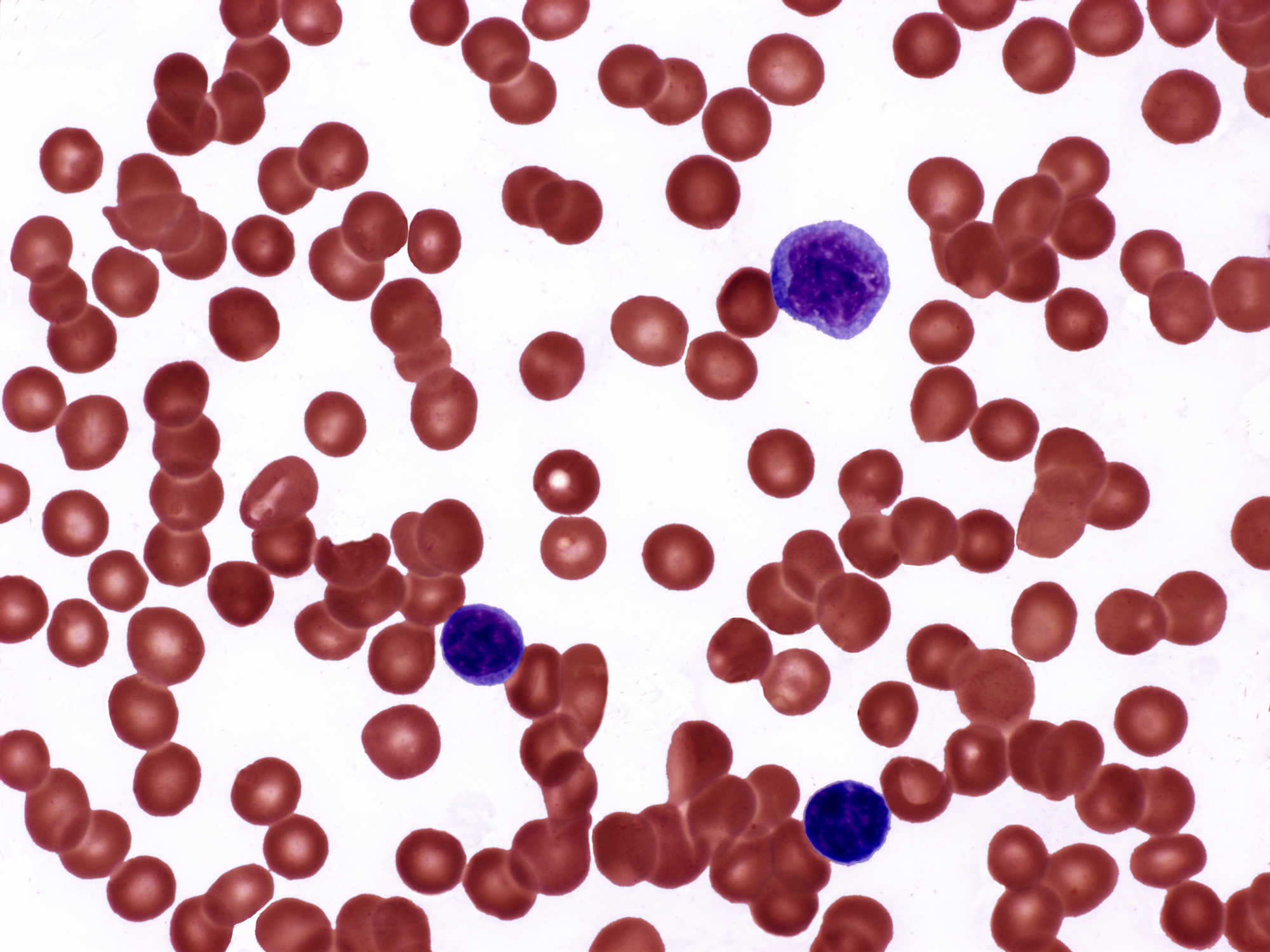
Living with Polycythemia: Lifestyle Modifications and Long-term Management
For individuals diagnosed with polycythemia, particularly polycythemia vera, long-term management involves more than just medical treatment. Lifestyle modifications play a crucial role in managing symptoms and reducing complications:
- Regular exercise: Engaging in moderate physical activity can help improve circulation and reduce the risk of blood clots.
- Hydration: Maintaining proper hydration is essential to prevent further blood thickening.
- Avoiding extreme temperatures: Very hot or cold environments can exacerbate symptoms like itching or circulatory problems.
- Smoking cessation: Quitting smoking is crucial, as it can worsen polycythemia and increase cardiovascular risks.
- Diet modifications: A heart-healthy diet low in saturated fats can help manage cardiovascular risk factors.
- Regular medical follow-ups: Consistent monitoring of blood counts and symptoms is essential for effective management.
What dietary recommendations are beneficial for patients with polycythemia? A diet rich in fruits, vegetables, whole grains, and lean proteins can help maintain overall health. Some patients may benefit from iron restriction, as iron is essential for red blood cell production. However, this should only be done under medical supervision.
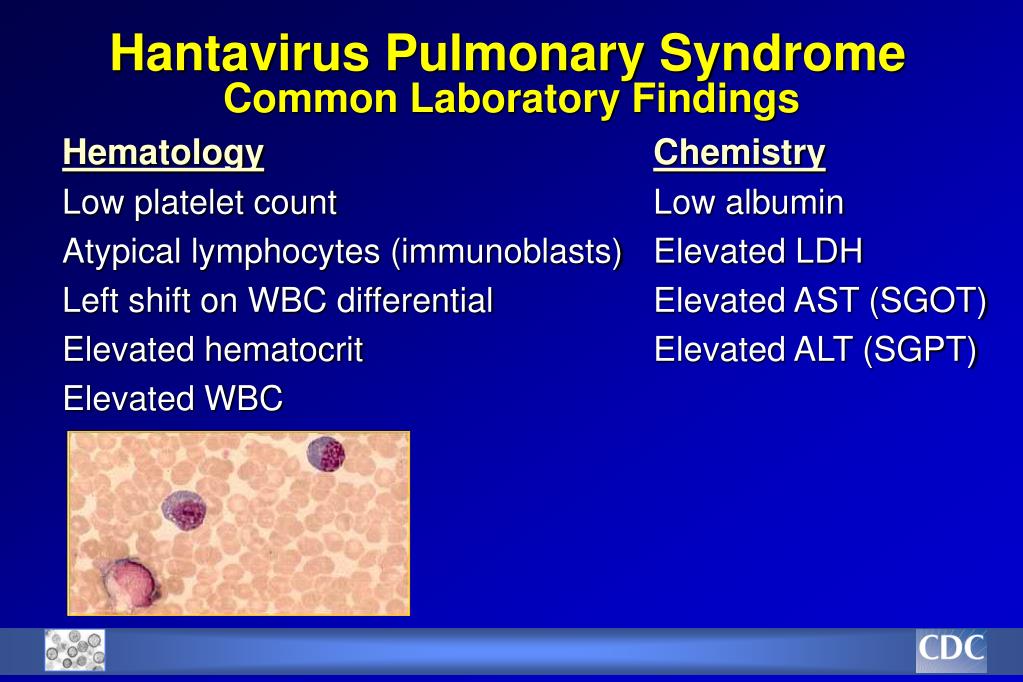
Psychological Impact and Support
Living with a chronic condition like polycythemia can have psychological impacts. Patients may experience anxiety about their health or the potential for complications. Support groups and counseling can be valuable resources for coping with these challenges.
How can patients with polycythemia manage stress and anxiety related to their condition? Stress management techniques such as meditation, yoga, or cognitive-behavioral therapy can be helpful. Regular communication with healthcare providers about concerns and joining support groups for individuals with similar conditions can also provide emotional support and practical coping strategies.
Future Directions in Polycythemia Research and Treatment
The field of polycythemia research continues to evolve, with several exciting areas of investigation:
- Novel JAK2 inhibitors: Research is ongoing to develop more effective and better-tolerated JAK2 inhibitors for polycythemia vera treatment.
- Targeted therapies: Scientists are exploring new molecular targets for more precise treatment of myeloproliferative disorders.
- Gene therapy: Future treatments may involve correcting the genetic mutations responsible for conditions like polycythemia vera.
- Improved diagnostic techniques: Development of more sensitive and specific tests for early detection and monitoring of polycythemia.
- Personalized medicine approaches: Tailoring treatment strategies based on individual genetic profiles and disease characteristics.
What potential breakthroughs in polycythemia treatment are on the horizon? One promising area is the development of combination therapies that target multiple aspects of the disease process. For example, combining JAK2 inhibitors with agents that modulate the bone marrow microenvironment could potentially improve treatment efficacy while reducing side effects.
:max_bytes(150000):strip_icc()/What-does-high-neutrophils-low-lymphocytes-mean-5210245_final-18f3a6d8f4034189a893739a7f438d4f.jpg)
The Role of Artificial Intelligence in Polycythemia Management
Artificial intelligence (AI) and machine learning are increasingly being applied to various aspects of healthcare, including the management of hematological disorders like polycythemia. Potential applications include:
- Predictive modeling for disease progression and complications
- Optimization of treatment protocols based on individual patient data
- Early detection of polycythemia through analysis of routine blood test results
- Monitoring of treatment response and adjustment of therapy in real-time
How might AI transform the diagnosis and treatment of polycythemia in the future? AI algorithms could potentially analyze vast amounts of patient data to identify subtle patterns indicative of polycythemia or its complications before they become clinically apparent. This could lead to earlier interventions and improved patient outcomes. Additionally, AI-driven decision support systems could assist clinicians in making more informed treatment choices based on a comprehensive analysis of patient-specific factors.

Polycythemia – StatPearls – NCBI Bookshelf
Continuing Education Activity
Polycythemia, also called erythrocytosis, refers to increased red blood cell mass, noted on laboratory evaluation as increased hemoglobin and hematocrit levels. Polycythemia vera is a subtype of polycythemia and can be associated with the overproduction of more than just the erythrocytic lineage. The clinical significance of erythrocytosis, due to any cause, is related to the associated risk of thrombotic events due to hyperviscosity of blood. Additionally, in cases of polycythemia vera, there is potential for progression to leukemia. This activity reviews the evaluation, treatment, and potential complications of polycythemia vera and highlights the role of the interprofessional team in identifying and treating this condition.
Objectives:
Describe the typical presenting features of polycythemia.
Outline the management of polycythemia.
Review the potential complications of polycythemia.

Use interprofessional team strategies to improve care coordination and communication to improve the evaluation and management of patients with polycythemia and optimize outcomes.
Access free multiple choice questions on this topic.
Introduction
Polycythemia, or erythrocytosis, refers to an increase in the absolute red blood cell (RBC) mass in the body. In practice, this is reflected by an increase in hemoglobin levels, or hematocrit, over what is considered physiologic for the particular age and gender.
The standard RBC mass does not usually exceed 36 ml/kg in males and 32 ml/kg in females. The reference ranges for normal hemoglobin levels and hematocrit vary depending on altitude, ethnicity, and country.[1] However, as a frame of reference, the hemoglobin and hematocrit of a healthy adult male are 16 g/dL +/- 2 gm/dl and 47% +/- 6%, respectively. The hemoglobin and hematocrit of a menstruating adult female are usually 13 g/dL +/- 2 gm/dl and 40% +/- 6%, respectively. Polycythemia in newborns is defined as a central venous hematocrit over 65% or a hemoglobin value above 22 g/dL.[2]
Polycythemia in newborns is defined as a central venous hematocrit over 65% or a hemoglobin value above 22 g/dL.[2]
Polycythemia vera is a sub-type of polycythemia. Often referred to colloquially as simply “polycythemia,” it is an acquired, Philadelphia-chromosome negative[3], myeloproliferative disorder. This condition can be associated with the overproduction of all three cell lines but with a notable predilection towards red blood cells.
The clinical significance of erythrocytosis, due to any cause, lies in the associated risk of thrombotic events due to hyperviscosity of blood. Additionally, the potential for progression to leukemia in cases of polycythemia vera also warrants additional management strategies to be implemented.
Etiology
Classification
Spurious Polycythemia
This occurs due to volume contraction rather than an increase in true RBC mass.
Causes include
Severe dehydration due to isolated fluid loss: potentially seen in diarrhea and severe vomiting
Gaisbock syndrome: Usually seen amongst obese, hypertensive males.
 Smoking, excessive alcohol, and use of diuretics are contributory.[4]
Smoking, excessive alcohol, and use of diuretics are contributory.[4]
True Polycythemia
Further stratified based on serum erythropoietin (EPO) levels as follows:
Low serum EPO levels (Primary polycythemia)
High serum EPO levels (Secondary polycythemia)
High altitude
Respiratory disorders: Chronic obstructive pulmonary disease (COPD), Pickwickian syndrome, uncontrolled asthma
Cyanotic heart diseases with right-to-left shunts
Renal disorders: Renal cysts, kidney cancer, renal artery stenosis, Bartter syndrome, focal sclerosing glomerulonephritis
Elevated carboxyhemoglobin: Usually seen in smokers, people working on cars in closed spaces, or people working in boiler rooms
Hemoglobinopathies: High-affinity hemoglobins such as Hb Yakima, methemoglobinemia
EPO-secreting tumors: sources include hepatomas, uterine leiomyomas, and cerebellar hemangiomas
Iatrogenic causes: Including erythropoietin analog administration, anabolic steroids, and testosterone replacement therapy
Neonatal Polycythemia
The increase in hematocrit is a normal compensatory mechanism in infants due to the relative tissue-level hypoxia in the intrauterine environment.
 It is exacerbated by the high affinity of fetal hemoglobin for oxygen.
It is exacerbated by the high affinity of fetal hemoglobin for oxygen.
Epidemiology
The prevalence of polycythemia vera has been estimated to be approximately 22 cases per 100,000 population[5]. It is believed to occur more frequently among Jewish patients of Eastern European descent than other Europeans and Asians. Polycythemia vera shows a male preponderance in all races and ethnicities, with a male-to-female ratio of approximately 2 to 1. The median age of presentation of PV is 60 years, with patients seldom seen before the age of 40. Polycythemia due to hemoglobinopathies and congenital cyanotic heart diseases is likely to be detected in significantly younger patients.
Pathophysiology
The pathophysiology would vary, depending on the cause in consideration.
High EPO Levels
Cellular hypoxia can occur due to any cause that triggers the release of erythropoietin from the renal peritubular lining capillary cells. A small amount of EPO is produced by the liver as well. EPO, in turn, acts on erythroid progenitor cells and stimulates erythropoiesis.
EPO, in turn, acts on erythroid progenitor cells and stimulates erythropoiesis.
Low EPO Levels
The primary defect in nearly 95% of cases of polycythemia vera is an acquired mutation in exon 14 of the tyrosine kinase JAK2 (V617F). Mutations have also been described in exon 12 of JAK2. These mutations result in a loss of the auto-inhibitory pseudo-kinase domain of JAK2, resulting in its constitutive activation. This constitutive activation results in both hypersensitivity to EPO and EPO-independent erythroid colony formation.[6]
Histopathology
Bone marrow examination is not routinely employed. Its utility largely remains restricted to cases where the clinical suspicion of polycythemia vera is high, despite the absence of a JAK2 (V617F) mutation, or if facilities to test for the mutation are unavailable. Classical findings, when coexistent with other suggestive hematologic parameters, help support a diagnosis of polycythemia vera. [7]
[7]
Strongly suggestive findings include a hypercellular marrow with erythroid hyperplasia and subtle megakaryocytic atypia.[8] Tri-lineage hyperproliferation is also an expected feature.
History and Physical
History
Common presenting symptoms, usually non-specific, include fatigue, headache, dizziness, transient blurry vision, amaurosis fugax, and other symptoms suggestive of transient ischemic attacks (TIAs).
Infrequently, patients may complain of pruritus after a warm water shower, particularly over the back.
A history of epistaxis, gastrointestinal (GI) bleeding, or easy bruising may be forthcoming.
Peptic ulcer disease commonly coexists, and patients may present with non-specific abdominal pain. Left hypochondrial pain and early satiety should raise the suspicion of splenomegaly.
Rarely, patients may present with a history of unexplained thrombotic complications, such as Budd-Chiari syndrome or digital infarcts.

It is vital to try and elicit etiology-specific history, such as a history of smoking, an extended stay at high altitudes, and congenital cardiac disease, among others. Significant family history may be noted in patients with hemoglobinopathies.
Physical Examination
Abnormal facial ruddiness may be prominent.
Cyanosis and clubbing, along with the presence of a murmur on auscultation, provide strong evidence favoring a congenital cyanotic heart disease.
Nicotine staining of the nails and teeth provides presumptive evidence of smoking, even in a non-forthcoming patient.
Morbid obesity could raise the possibility of Pickwickian syndrome, whereas a barrel chest could suggest obstructive lung disease.
Examining the abdomen may lead to finding a palpable spleen or eliciting the bruit of renal arterial stenosis in a thin-built individual.
Evaluation
An evaluation must proceed sequentially. Due to the broad array of potential causes, it is vital to consider the appropriate investigation in that specific clinical context. However, the following may provide a frame of reference:
Due to the broad array of potential causes, it is vital to consider the appropriate investigation in that specific clinical context. However, the following may provide a frame of reference:
Hemogram
Based on the WHO 2017 criteria, hematocrit levels above 49% in males and 48% in females at sea level are to be considered suggestive of polycythemia vera. In cases of polycythemia vera, there could be a concurrent increase in platelet and leukocyte counts as well. The leucocyte count is usually between 10,000 to 20,000/microliter and may show eosinophilia and basophilia. Platelet counts may rarely exceed 1,000,000/microliter.
Radioisotope Studies
Radioisotope studies using chromium-labeled autologous RBC transfusions accurately determine the true RBC mass and conclusively exclude spurious polycythemia.
Serum EPO Levels
The presence of either high or low EPO levels directs the further plan of evaluation.
Low EPO Levels
Low EPO levels indicate primary polycythemia. Subsequent evaluation should be targeted toward the detection of polycythemia vera.
Subsequent evaluation should be targeted toward the detection of polycythemia vera.
JAK2 mutation studies are virtually diagnostic for polycythemia vera (95% cases). Mutations may occur either in exon 14 (more commonly) or in exon 12.
High EPO Levels
High EPO levels indicate secondary polycythemia. Subsequent evaluation should be aimed at determining the cause. This should include, but not be limited to, the following:
Measurement of arterial oxygen saturation levels using a pulse-oximeter: low levels would likely indicate a pulmonary or cardiac cause.
- Normal saturation levels could require further evaluation, such as:
The use of a co-oximeter to rule out methemoglobinemia
Measurement of carboxyhemoglobin levels for smokers
Measurement of the P50 of Hb to detect high-affinity hemoglobinopathies
Relevant investigations to detect a possible EPO-secreting tumor
Serum Ferritin, Vitamin B12, and Folate Levels
Low serum ferritin and low folate levels have been associated more with primary polycythemia.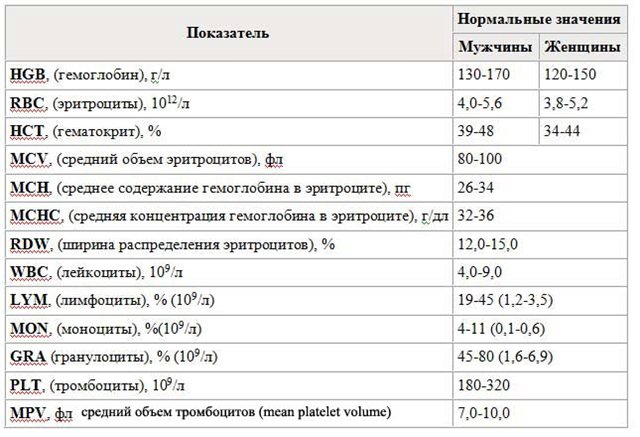 [4] Raised vitamin B12 levels, often striking, may be observed. This occurs due to increased transcobalamin III secretion by leukocytes.
[4] Raised vitamin B12 levels, often striking, may be observed. This occurs due to increased transcobalamin III secretion by leukocytes.
Assessment of Renal Function
Renal function abnormalities indicate a higher likelihood of secondary polycythemia. Uric acid levels are often raised due to increased cell proliferation and subsequent turnover.
Assessment of Hepatic Status
Liver cirrhosis and inflammatory liver disease have been associated with secondary polycythemia and increased RBC proliferation.[4]
Ultrasound
An ultrasound and Doppler study of the abdomen would help identify a secondary cause.
In cases of suspected secondary polycythemia, the utility of additional investigations such as a chest radiograph, lung function tests, sleep studies, and an echocardiograph are to be considered as appropriate.
Treatment / Management
The treatment of secondary polycythemia is directed at correcting the cause.
For polycythemia vera, available treatment modalities include:
Phlebotomy
Phlebotomy was established as the backbone of therapy, primarily based on the trial conducted by the Polycythemia Vera Study Group (PVSG). The study found that, compared to chlorambucil or radioactive phosphorous treatment, treatment with phlebotomy alone was associated with longer median survival.[9]
The study found that, compared to chlorambucil or radioactive phosphorous treatment, treatment with phlebotomy alone was associated with longer median survival.[9]
The rationale behind repeated phlebotomies was that cytoreduction would reduce hyperviscosity. Additionally, it would induce a state of iron deficiency that would help retard red-cell proliferation.
In practice, weekly sessions are conducted, during which approximately 500 mL of blood is removed, provided the hemodynamic status permits this.
This is continued weekly until a target hematocrit of under 45% is obtained. This target was determined based on the findings of the CYTO-PV trial conducted in Italy. Investigators observed significantly lower rates of cardiovascular deaths and major thrombotic episodes in patients kept under this threshold.[10]
For secondary polycythemias, phlebotomy is usually reserved for the following conditions:[11]
Chronic lung diseases
Cyanotic heart diseases
Post-renal transplant patients with hypertension and erythrocytosis, not responding to optimal doses of angiotensin-converting enzyme inhibitors (ACEIs)/angiotensin receptor blockers (ARBs)
Hydroxyurea
Hydroxyurea is usually considered second-line therapy. Evidence of benefit came from, among others, a study by the Polycythemia Vera Study Group (PVSG) that showed lower rates of thrombosis compared to a historical cohort treated with phlebotomy alone.[12] Despite theoretical concerns, studies have not found a significant association between the use of hydroxyurea and an increased risk of leukemic transformation.[13] Indications for use include:
Evidence of benefit came from, among others, a study by the Polycythemia Vera Study Group (PVSG) that showed lower rates of thrombosis compared to a historical cohort treated with phlebotomy alone.[12] Despite theoretical concerns, studies have not found a significant association between the use of hydroxyurea and an increased risk of leukemic transformation.[13] Indications for use include:
Poor venous access
High phlebotomy requirement
When phlebotomy is not possible due to logistic reasons
Severe thrombocytosis
Intractable pruritus
The standard daily doses range from 500 to 1500 mg per day.
Doses are adjusted to target platelet counts below 500,000/mcL. However, it is necessary to adjust doses such that the absolute neutrophil count remains above 2000/microliters.
Ruxolitinib
The JAK2 inhibitor ruxolitinib is used when patients are intolerant or unresponsive to hydroxyurea.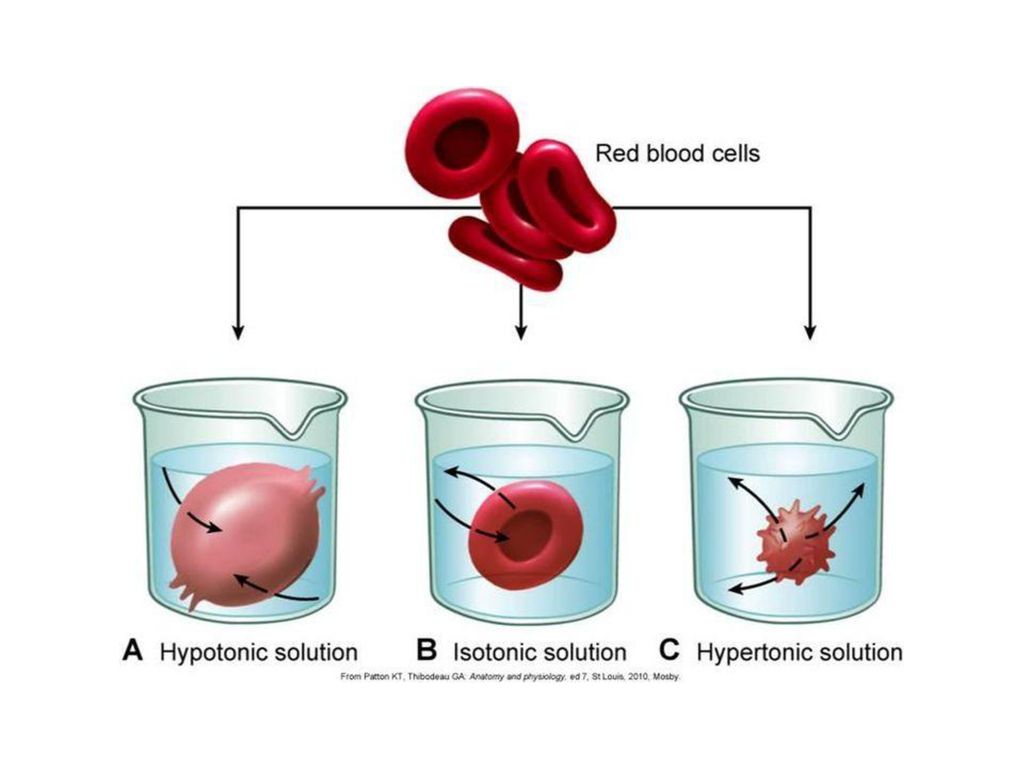
Evidence supporting the use of Ruxolitinib in myeloproliferative disorders came from the COMFORT trials. The COMFORT-I study compared the efficacy of Ruxolitinib with placebo therapy, whereas COMFORT-II compared it with the “best available therapy.” Both trials showed a significant reduction in splenomegaly, improvement in symptoms, and better survival.[14][13][14]
However, despite this enhanced benefit, the use of ruxolitinib was associated with increased risks of anemia, often dose-limiting, and thrombocytopenia.
The standard recommended dose for polycythemia vera is 10 mg twice a day.
Dose reduction is required if hemoglobin drops to below 12 gm/dl.
A fall in hemoglobin to below 8 gm/dl indicates that dosing is to be temporarily interrupted.
Low-Dose Aspirin
The original PVSG trial showed that, despite greater longevity, patients treated with phlebotomy alone were at a greater risk of developing thrombosis during the first three years of therapy.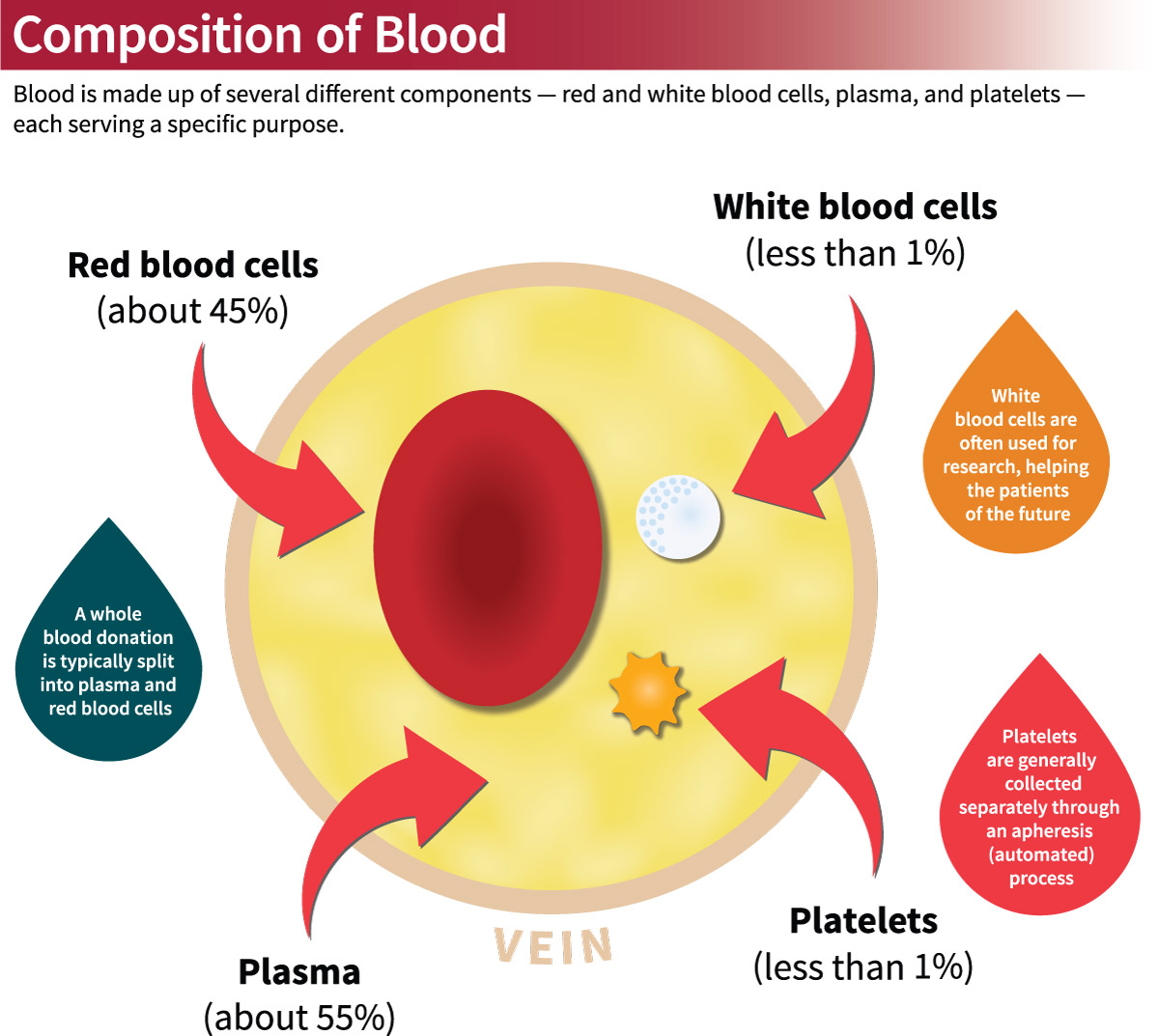 This seemed to suggest a potential benefit to concurrently using antiplatelet or anticoagulant agents. Initial trials using higher doses of aspirin or dipyridamole showed unsatisfactory gastrointestinal hemorrhage. However, subsequent studies found that lower doses of aspirin could be safely used.[15]
This seemed to suggest a potential benefit to concurrently using antiplatelet or anticoagulant agents. Initial trials using higher doses of aspirin or dipyridamole showed unsatisfactory gastrointestinal hemorrhage. However, subsequent studies found that lower doses of aspirin could be safely used.[15]
Currently, aspirin is indicated when there is inadequate control of microvascular symptoms after achieving the target hematocrit or in the presence of other cardiovascular risk factors.
Aspirin, when indicated, is recommended to be used at low doses, ranging from 40 to 100 mg daily.
Hypouricemic Agents
Agents such as allopurinol and febuxostat may be required in cases with significant hyperuricemia. Recent studies indicate that, between them, allopurinol may be a safer alternative with respect to all-cause and cardiovascular mortality.[16]
Management of Pruritus
Depending on the severity of pruritus and the clinical response to therapy, therapeutic modalities available for symptomatic relief include antihistamines[17] and selective serotonin reuptake inhibitors (SSRIs). [18]
[18]
Management of Polycythemia Vera in Pregnancy
The standard therapeutic measures of phlebotomy and low-dose aspirin are appropriate in most cases. Certain high-risk women may require the addition of pegylated interferon (IFN)-alpha.[19]
Management of Neonatal Polycythemia
Most patients do not need treatment. Exchange transfusion is occasionally required due to hyperviscosity.
Differential Diagnosis
Primary myelofibrosis
Chronic myeloid leukemia
Essential thrombocythemia
EPO receptor mutations
Prognosis
Studies estimate the median survival in cases diagnosed with polycythemia vera to be approximately 14.1 years.[13]
Factors that were found to correlate with better prognosis included:
Factors associated with worse outcomes included:
Higher leucocyte counts
Venous thrombosis
Leukoerythroblastic blood smear
Complications
Secondary polycythemia is associated primarily with complications arising from hyperviscosity. Polycythemia vera is associated with complications associated with an increased risk of thrombosis and progression to malignant conditions.
Polycythemia vera is associated with complications associated with an increased risk of thrombosis and progression to malignant conditions.
Commonly encountered complications include:
Bleeding: Recurrent epistaxis or GI bleeding is often seen, which may lead to iron deficiency anemia, potentially confounding clinical findings, including bone marrow appearance.
Thrombosis: Due to hyperviscosity, there is a preponderance of both arterial and venous thrombosis. Manifestations of arterial thrombosis include digital infarcts, and cerebral ischemic infarcts, particularly in watershed territories. Venous thrombosis, such as Budd-Chiari syndrome, is also seen.
Progression to leukemia, particularly acute myeloid leukemia (AML), is seen in approximately 5% of cases and is often refractory to treatment. Studies have implicated the use of chlorambucil, pipobroman, or radioactive phosphorous as factors that increase the likelihood of progression.
Consultations
A hematologist consultation should be sought in all cases of suspected primary polycythemia.
Deterrence and Patient Education
Patients must be encouraged to stop smoking. Genetic counseling must be offered to the families of those with hemoglobinopathies. Patients with polycythemia vera must be discouraged from donating blood. Because this is a myeloproliferative disorder, blood from donors with polycythemia vera is not considered appropriate for donation in most countries.
Enhancing Healthcare Team Outcomes
Polycythemia can affect every organ in the body, and the symptoms are primarily related to impaired oxygen delivery and blood hyperviscosity. The condition is primarily managed by the hematologist, but managing complications requires an interprofessional team comprised of clinicians, specialists, nursing staff, pharmacists, and phlebotomists. Patients need to be educated by clinicians about the potential complications and when to seek medical assistance. Pharmacists will help manage medication regimens, verify dosing, check for interactions, and offer patients medication counseling. Nurses will assist in patient evaluation, counsel patients about their condition, answer patient questions, and serve as coordinators for the activities of the various disciplines covering the case. The interprofessional model requires open communication among all care team members, including accurate record-keeping. This approach will result in improved patient outcomes. [Level 5]
Pharmacists will help manage medication regimens, verify dosing, check for interactions, and offer patients medication counseling. Nurses will assist in patient evaluation, counsel patients about their condition, answer patient questions, and serve as coordinators for the activities of the various disciplines covering the case. The interprofessional model requires open communication among all care team members, including accurate record-keeping. This approach will result in improved patient outcomes. [Level 5]
While survival has improved over the past three decades, the aim is also to maintain quality of life. Apart from thrombotic complications, there is also an increased risk of bleeding as well as a risk of infections. Finally, patients should be made aware that they need lifelong follow-up as there is a risk of progression to acute leukemia or myeloproliferative syndrome. The nursing staff should coordinate and monitor close follow-up and assist in educating the patient and family to ensure regular care is obtained. [21] [Level 1]
[21] [Level 1]
Review Questions
Access free multiple choice questions on this topic.
Comment on this article.
References
- 1.
Mandala WL, Gondwe EN, MacLennan JM, Molyneux ME, MacLennan CA. Age- and sex-related changes in hematological parameters in healthy Malawians. J Blood Med. 2017;8:123-130. [PMC free article: PMC5587168] [PubMed: 28919829]
- 2.
Wiswell TE, Cornish JD, Northam RS. Neonatal polycythemia: frequency of clinical manifestations and other associated findings. Pediatrics. 1986 Jul;78(1):26-30. [PubMed: 3725498]
- 3.
Tefferi A, Vardiman JW. Classification and diagnosis of myeloproliferative neoplasms: the 2008 World Health Organization criteria and point-of-care diagnostic algorithms. Leukemia. 2008 Jan;22(1):14-22. [PubMed: 17882280]
- 4.
Pearson TC. Apparent polycythaemia. Blood Rev. 1991 Dec;5(4):205-13. [PubMed: 1782479]
- 5.

Ma X, Vanasse G, Cartmel B, Wang Y, Selinger HA. Prevalence of polycythemia vera and essential thrombocythemia. Am J Hematol. 2008 May;83(5):359-62. [PubMed: 18181200]
- 6.
Ugo V, Marzac C, Teyssandier I, Larbret F, Lécluse Y, Debili N, Vainchenker W, Casadevall N. Multiple signaling pathways are involved in erythropoietin-independent differentiation of erythroid progenitors in polycythemia vera. Exp Hematol. 2004 Feb;32(2):179-87. [PubMed: 15102479]
- 7.
Kvasnicka HM, Thiele J. Prodromal myeloproliferative neoplasms: the 2008 WHO classification. Am J Hematol. 2010 Jan;85(1):62-9. [PubMed: 19844986]
- 8.
Lakey MA, Pardanani A, Hoyer JD, Nguyen PL, Lasho TL, Tefferi A, Hanson CA. Bone marrow morphologic features in polycythemia vera with JAK2 exon 12 mutations. Am J Clin Pathol. 2010 Jun;133(6):942-8. [PubMed: 20472853]
- 9.
Berk PD, Goldberg JD, Donovan PB, Fruchtman SM, Berlin NI, Wasserman LR.
 Therapeutic recommendations in polycythemia vera based on Polycythemia Vera Study Group protocols. Semin Hematol. 1986 Apr;23(2):132-43. [PubMed: 3704665]
Therapeutic recommendations in polycythemia vera based on Polycythemia Vera Study Group protocols. Semin Hematol. 1986 Apr;23(2):132-43. [PubMed: 3704665]- 10.
Marchioli R, Finazzi G, Specchia G, Masciulli A, Mennitto MR, Barbui T. The CYTO-PV: A Large-Scale Trial Testing the Intensity of CYTOreductive Therapy to Prevent Cardiovascular Events in Patients with Polycythemia Vera. Thrombosis. 2011;2011:794240. [PMC free article: PMC3200258] [PubMed: 22084668]
- 11.
Assi TB, Baz E. Current applications of therapeutic phlebotomy. Blood Transfus. 2014 Jan;12 Suppl 1(Suppl 1):s75-83. [PMC free article: PMC3934278] [PubMed: 24120605]
- 12.
Fruchtman SM, Mack K, Kaplan ME, Peterson P, Berk PD, Wasserman LR. From efficacy to safety: a Polycythemia Vera Study group report on hydroxyurea in patients with polycythemia vera. Semin Hematol. 1997 Jan;34(1):17-23. [PubMed: 9025158]
- 13.
Tefferi A, Rumi E, Finazzi G, Gisslinger H, Vannucchi AM, Rodeghiero F, Randi ML, Vaidya R, Cazzola M, Rambaldi A, Gisslinger B, Pieri L, Ruggeri M, Bertozzi I, Sulai NH, Casetti I, Carobbio A, Jeryczynski G, Larson DR, Müllauer L, Pardanani A, Thiele J, Passamonti F, Barbui T.
 Survival and prognosis among 1545 patients with contemporary polycythemia vera: an international study. Leukemia. 2013 Sep;27(9):1874-81. [PMC free article: PMC3768558] [PubMed: 23739289]
Survival and prognosis among 1545 patients with contemporary polycythemia vera: an international study. Leukemia. 2013 Sep;27(9):1874-81. [PMC free article: PMC3768558] [PubMed: 23739289]- 14.
Harrison C, Kiladjian JJ, Al-Ali HK, Gisslinger H, Waltzman R, Stalbovskaya V, McQuitty M, Hunter DS, Levy R, Knoops L, Cervantes F, Vannucchi AM, Barbui T, Barosi G. JAK inhibition with ruxolitinib versus best available therapy for myelofibrosis. N Engl J Med. 2012 Mar 01;366(9):787-98. [PubMed: 22375970]
- 15.
Landolfi R, Marchioli R, Kutti J, Gisslinger H, Tognoni G, Patrono C, Barbui T., European Collaboration on Low-Dose Aspirin in Polycythemia Vera Investigators. Efficacy and safety of low-dose aspirin in polycythemia vera. N Engl J Med. 2004 Jan 08;350(2):114-24. [PubMed: 14711910]
- 16.
White WB, Saag KG, Becker MA, Borer JS, Gorelick PB, Whelton A, Hunt B, Castillo M, Gunawardhana L., CARES Investigators. Cardiovascular Safety of Febuxostat or Allopurinol in Patients with Gout.
 N Engl J Med. 2018 Mar 29;378(13):1200-1210. [PubMed: 29527974]
N Engl J Med. 2018 Mar 29;378(13):1200-1210. [PubMed: 29527974]- 17.
Weick JK, Donovan PB, Najean Y, Dresch C, Pisciotta AV, Cooperberg AA, Goldberg JD. The use of cimetidine for the treatment of pruritus in polycythemia vera. Arch Intern Med. 1982 Feb;142(2):241-2. [PubMed: 7059251]
- 18.
Tefferi A, Fonseca R. Selective serotonin reuptake inhibitors are effective in the treatment of polycythemia vera-associated pruritus. Blood. 2002 Apr 01;99(7):2627. [PubMed: 11926187]
- 19.
Tefferi A, Vannucchi AM, Barbui T. Polycythemia vera treatment algorithm 2018. Blood Cancer J. 2018 Jan 10;8(1):3. [PMC free article: PMC5802495] [PubMed: 29321547]
- 20.
Gangat N, Strand JJ, Lasho TL, Li CY, Pardanani A, Tefferi A. Pruritus in polycythemia vera is associated with a lower risk of arterial thrombosis. Am J Hematol. 2008 Jun;83(6):451-3. [PubMed: 18257107]
- 21.
Raedler LA. Diagnosis and Management of Polycythemia Vera: Proceedings from a Multidisciplinary Roundtable.
 Am Health Drug Benefits. 2014 Oct;7(7 Suppl 3):S36-47. [PMC free article: PMC4639938] [PubMed: 26568781]
Am Health Drug Benefits. 2014 Oct;7(7 Suppl 3):S36-47. [PMC free article: PMC4639938] [PubMed: 26568781]
Disclosure: Ashwin Pillai declares no relevant financial relationships with ineligible companies.
Disclosure: Salman Fazal declares no relevant financial relationships with ineligible companies.
Disclosure: Shiva Kumar Mukkamalla declares no relevant financial relationships with ineligible companies.
Disclosure: Hani Babiker declares no relevant financial relationships with ineligible companies.
Polycythemia vera – Symptoms & causes
Overview
Polycythemia vera (pol-e-sy-THEE-me-uh VEER-uh) is a type of blood cancer. It causes your bone marrow to make too many red blood cells. These excess cells thicken your blood, slowing its flow, which may cause serious problems, such as blood clots.
Polycythemia vera is rare. It usually develops slowly, and you might have it for years without knowing. Often the condition is found during a blood test done for another reason.
It usually develops slowly, and you might have it for years without knowing. Often the condition is found during a blood test done for another reason.
Without treatment, polycythemia vera can be life-threatening. But proper medical care can help ease signs, symptoms and complications of this disease.
Products & Services
Symptoms
Many people with polycythemia vera don’t have noticeable signs or symptoms. Some people might develop vague symptoms such as headache, dizziness, fatigue and blurred vision.
More-specific symptoms of polycythemia vera include:
- Itchiness, especially after a warm bath or shower
- Numbness, tingling, burning, or weakness in your hands, feet, arms or legs
- A feeling of fullness soon after eating and bloating or pain in your left upper abdomen due to an enlarged spleen
- Unusual bleeding, such as a nosebleed or bleeding gums
- Painful swelling of one joint, often the big toe
- Shortness of breath and difficulty breathing when lying down
When to see a doctor
Make an appointment with your doctor if you have signs or symptoms of polycythemia vera.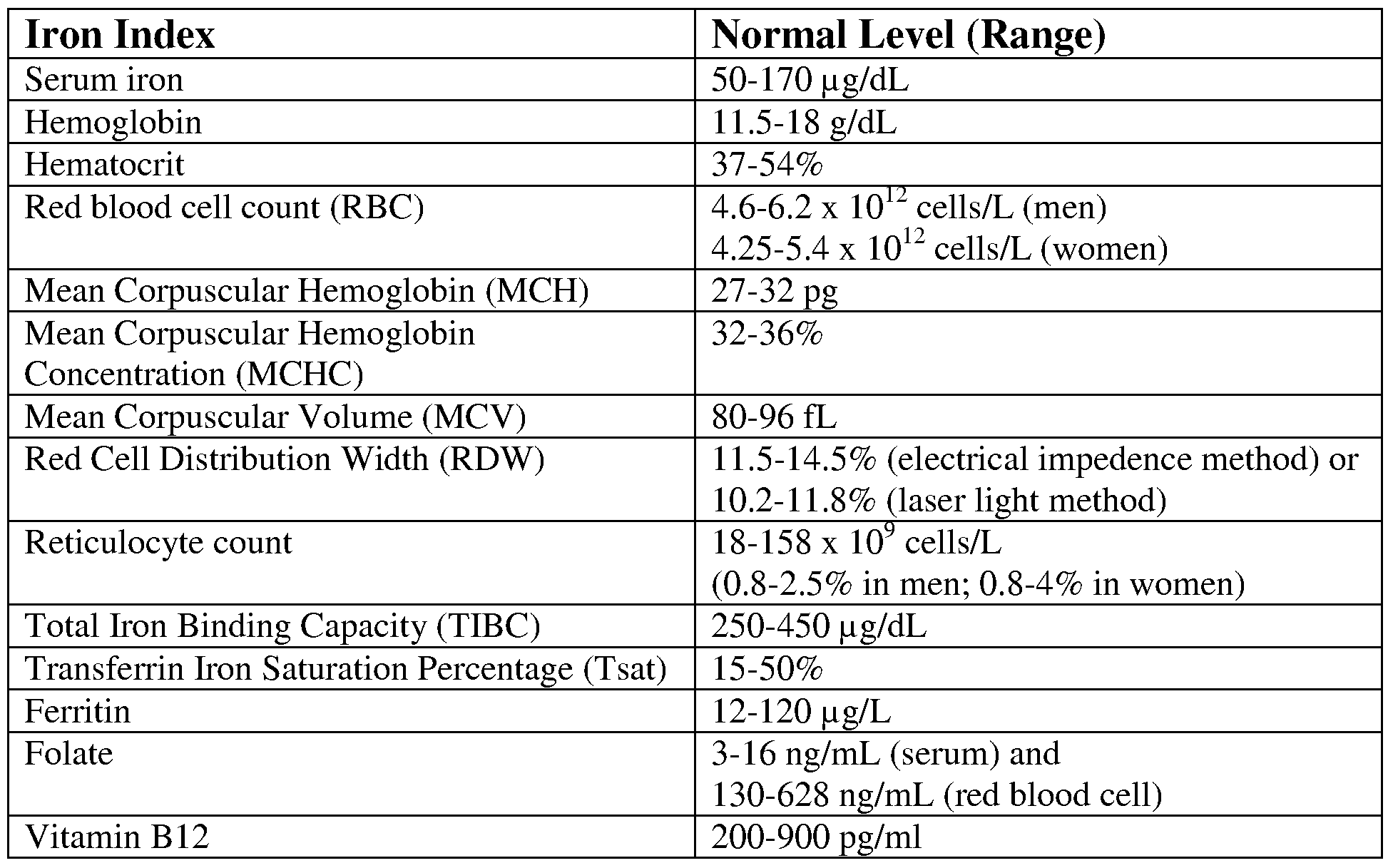
Causes
Polycythemia vera occurs when a mutation in a gene causes a problem with blood cell production. Normally, your body regulates the number of each of the three types of blood cells you have — red blood cells, white blood cells and platelets. But in polycythemia vera, your bone marrow makes too many of some of these blood cells.
The cause of the gene mutation in polycythemia vera is unknown, but it’s generally not inherited from your parents.
Risk factors
Polycythemia vera can occur at any age, but it’s more common in adults between 50 and 75. Men are more likely to get polycythemia vera, but women tend to get the disease at younger ages.
Complications
Possible complications of polycythemia vera include:
- Blood clots. Increased blood thickness and decreased blood flow, as well as abnormalities in your platelets, raise your risk of blood clots. Blood clots can cause a stroke, a heart attack, or a blockage in an artery in your lungs or a vein deep within a leg muscle or in the abdomen.

- Enlarged spleen. Your spleen helps your body fight infection and filter unwanted material, such as old or damaged blood cells. The increased number of blood cells caused by polycythemia vera makes your spleen work harder than normal, which causes it to enlarge.
- Problems due to high levels of red blood cells. Too many red blood cells can lead to a number of other complications, including open sores on the inside lining of your stomach, upper small intestine or esophagus (peptic ulcers) and inflammation in your joints (gout).
- Other blood disorders. In rare cases, polycythemia vera can lead to other blood diseases, including a progressive disorder in which bone marrow is replaced with scar tissue, a condition in which stem cells don’t mature or function properly, or cancer of the blood and bone marrow (acute leukemia).
The norm of a complete blood count during pregnancy. Hemoglobin, platelets, hematocrit, erythrocytes and leukocytes during pregnancy.
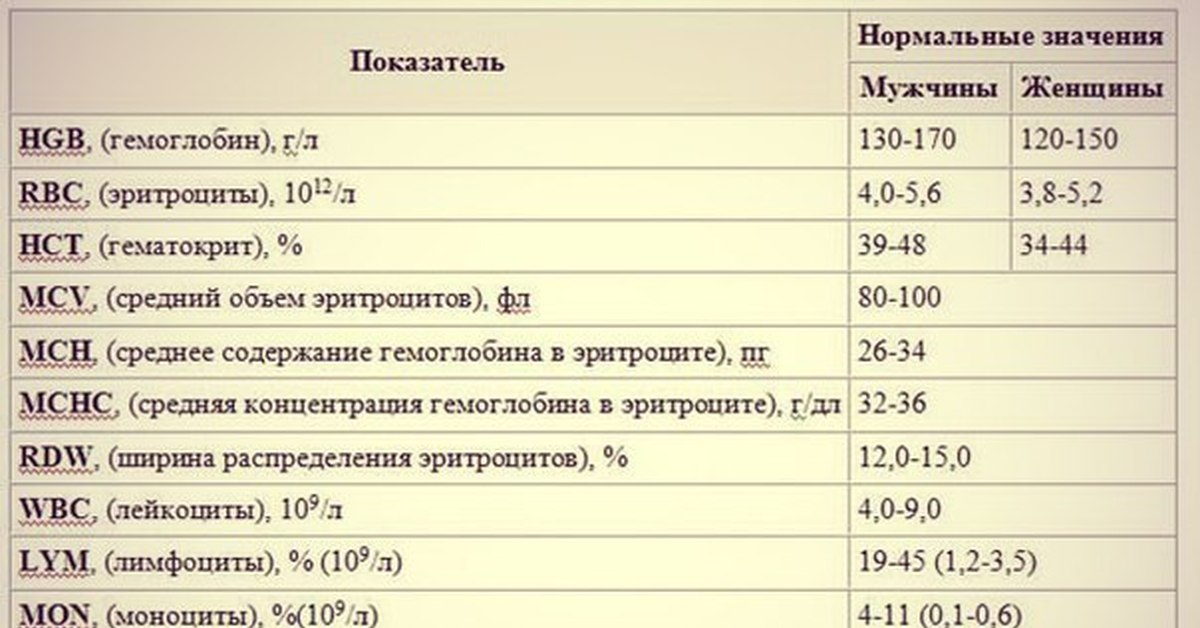 Clinical blood test during pregnancy. Hematological changes during pregnancy.
Clinical blood test during pregnancy. Hematological changes during pregnancy.
A normal pregnancy is characterized by significant changes in almost all organs and systems to adapt to the requirements of the fetoplacental complex, including changes in blood tests during pregnancy.
Blood test norms during pregnancy: summary of the article
- Significant hematological changes during pregnancy are physiological anemia, neutrophilia, mild thrombocytopenia, increased blood clotting factors and decreased fibrinolysis.
- By 6-12 weeks of gestation, plasma volume increases by approximately 10-15%. The fastest rate of increase in plasma volume occurs between 30 and 34 weeks of gestation, after which plasma volume changes little.
- Red blood cell count begins to increase at 8-10 weeks of gestation and by the end of pregnancy increases by 20-30% (250-450 ml) of the normal level for non-pregnant women by the end of pregnancy A significant increase in plasma volume relative to the increase in hemoglobin and red blood cell volume leads to moderate decrease in hemoglobin levels (physiological anemia of pregnancy), which is observed in healthy pregnant women.

- Pregnant women may have a slightly lower platelet count than healthy non-pregnant women.
- The neutrophil count begins to rise in the second month of pregnancy and stabilizes in the second or third trimester, at which time the white blood cell count. The absolute number of lymphocytes does not change.
- The level of some blood coagulation factors changes during pregnancy.
This article describes the hematological changes that occur during pregnancy, the most important of which are:
- Increased plasma volume and decreased hematocrit
- Physiological anemia, low hemoglobin
- Elevated white blood cells during pregnancy
- Neutrophilia
- Moderate thrombocytopenia
- Increase in procoagulant factors
- Fibrinolysis reduction
Tests mentioned in the article
How to take blood tests and get a 5% discount? Go to the CIR laboratories online store!
Plasma volume
By 6-12 weeks of pregnancy, the volume of blood plasma increases by about 10-15%.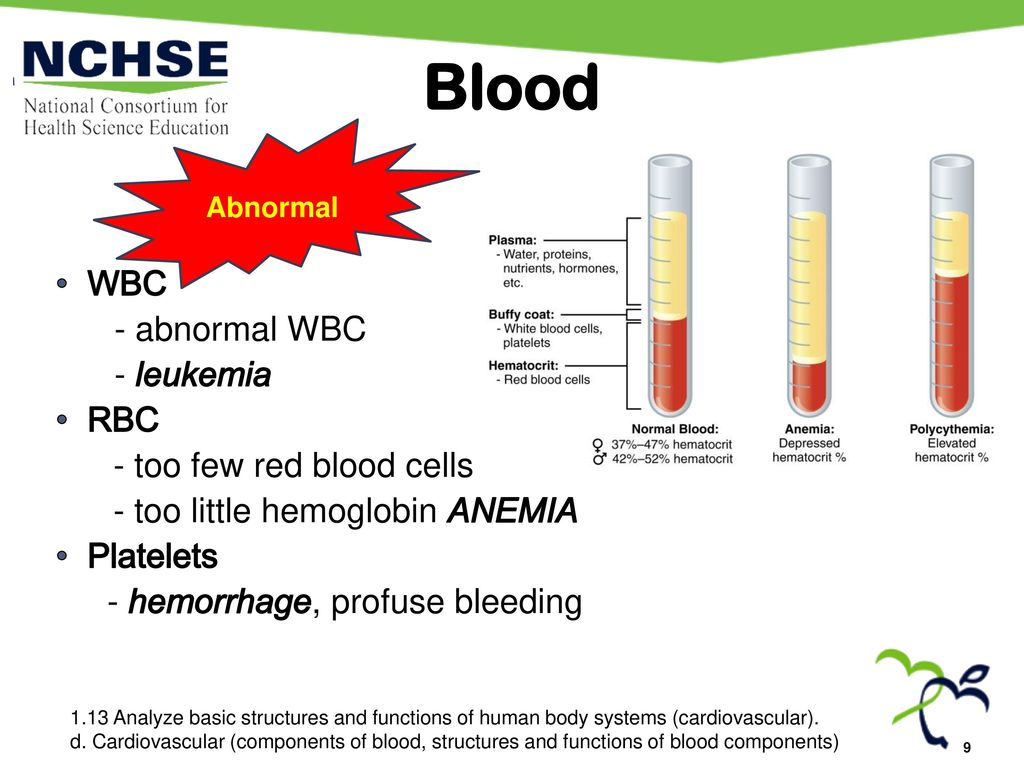 The fastest rate of increase in plasma volume occurs between 30 and 34 weeks of gestation, after which plasma volume changes little. On average, plasma volume increases by 1100-1600 ml per trimester, and as a result, plasma volume during pregnancy increases to 4700-5200 ml, which is 30 to 50% higher than plasma volume in non-pregnant women.
The fastest rate of increase in plasma volume occurs between 30 and 34 weeks of gestation, after which plasma volume changes little. On average, plasma volume increases by 1100-1600 ml per trimester, and as a result, plasma volume during pregnancy increases to 4700-5200 ml, which is 30 to 50% higher than plasma volume in non-pregnant women.
During pregnancy, plasma renin activity tends to increase, while the level of atrial natriuretic peptide decreases slightly. This suggests that the increase in plasma volume is caused by insufficiency of the vascular system, which leads to systemic vasodilation (dilation of blood vessels throughout the body) and an increase in vascular capacity. Since it is the volume of blood plasma that initially increases, its effect on the renal and atrial receptors leads to opposite effects on the hormonal background (a decrease in plasma renin activity and an increase in natriuretic peptide). This hypothesis is also supported by the observation that an increase in sodium intake does not lead to a further increase in plasma volume.
Plasma volume immediately decreases after delivery, but rises again 2-5 days later, possibly due to increased aldosterone secretion occurring at this time. Plasma volume then gradually decreases again: 3 weeks postpartum, it is still elevated by 10-15% of the normal level for non-pregnant women, but usually returns to normal by 6 weeks postpartum.
Red blood cells during pregnancy, ESR during pregnancy
The number of red blood cells begins to increase at 8-10 weeks of gestation and by the end of pregnancy increases by 20-30% (250-450 ml) of the normal level for non-pregnant women, especially in women taking drugs iron during pregnancy. Among pregnant women who did not take iron supplements, the number of red blood cells may increase by only 15-20%. The lifespan of red blood cells decreases slightly during a normal pregnancy.
The level of erythropoietin during normal pregnancy increases by 50% and its change depends on the presence of pregnancy complications. An increase in plasma erythropoietin leads to an increase in the number of red blood cells, which partially provide for the high metabolic oxygen requirements during pregnancy.
An increase in plasma erythropoietin leads to an increase in the number of red blood cells, which partially provide for the high metabolic oxygen requirements during pregnancy.
In women not taking iron supplements, mean red cell volume decreases during pregnancy and averages 80-84 fl in the third trimester. However, in healthy pregnant women and in pregnant women with moderate iron deficiency, the average volume of erythrocytes increases by about 4 fl.
ESR increases during pregnancy, which has no diagnostic value.
Anemia in pregnancy, hemoglobin in pregnancy, hematocrit in pregnancy, low hemoglobin in pregnancy
Decreased hemoglobin in pregnancy
pregnant), which is observed in healthy pregnant women. The biggest difference between the growth rate of blood plasma volume and the number of red blood cells in the maternal circulation is formed during the end of the second, beginning of the third trimester (a decrease in hemoglobin usually occurs at 28-36 weeks of pregnancy). The hemoglobin concentration rises due to the cessation of the increase in plasma volume and the continuation of the increase in the amount of hemoglobin. Conversely, the absence of physiological anemia is a risk factor for stillbirth.
The hemoglobin concentration rises due to the cessation of the increase in plasma volume and the continuation of the increase in the amount of hemoglobin. Conversely, the absence of physiological anemia is a risk factor for stillbirth.
Anemia in pregnancy
Defining anemia in pregnant women is difficult because it consists of pregnancy-related changes in plasma volume and red blood cell count, physiological differences in hemoglobin concentration between women and men, and the frequency of iron supplementation during pregnancy.
- The Centers for Disease Prevention and Control defined anemia as hemoglobin levels less than 110 g/L (hematocrit less than 33%) in the first and third trimesters and less than 105 g/L (hematocrit less than 32%) in the second trimester.
- WHO defined anemia in pregnancy as a decrease in hemoglobin less than 110 g/l (11 g/dl) or hematocrit less than 6.83 mmol/l or 33%. Severe anemia in pregnancy is determined by a hemoglobin level of less than 70 g/l and needs medical treatment.
 Very severe anemia is defined as a hemoglobin level of less than 40 g/L and is a medical emergency due to the risk of congestive heart failure.
Very severe anemia is defined as a hemoglobin level of less than 40 g/L and is a medical emergency due to the risk of congestive heart failure.
Women with hemoglobin values below these levels are considered anemic and should undergo routine tests (CBC with peripheral blood smear evaluation, reticulocyte count, serum iron, ferritin, transferrin). If no abnormalities were detected during the examination, then hemoglobin reduced to a level of 100 g / l can be considered physiological anemia with a wide variety of factors affecting the normal level of hemoglobin in a particular person.
Chronic severe anemia is most common among women in developing countries. A decrease in maternal hemoglobin below 60 g / l leads to a decrease in the volume of amniotic fluid, vasodilation of the cerebral vessels of the fetus and a change in the heart rate of the fetus. It also increases the risk of preterm birth, miscarriage, low birth weight and stillbirth. In addition, severe anemia (hemoglobin less than 70 g/l) increases the risk of maternal death.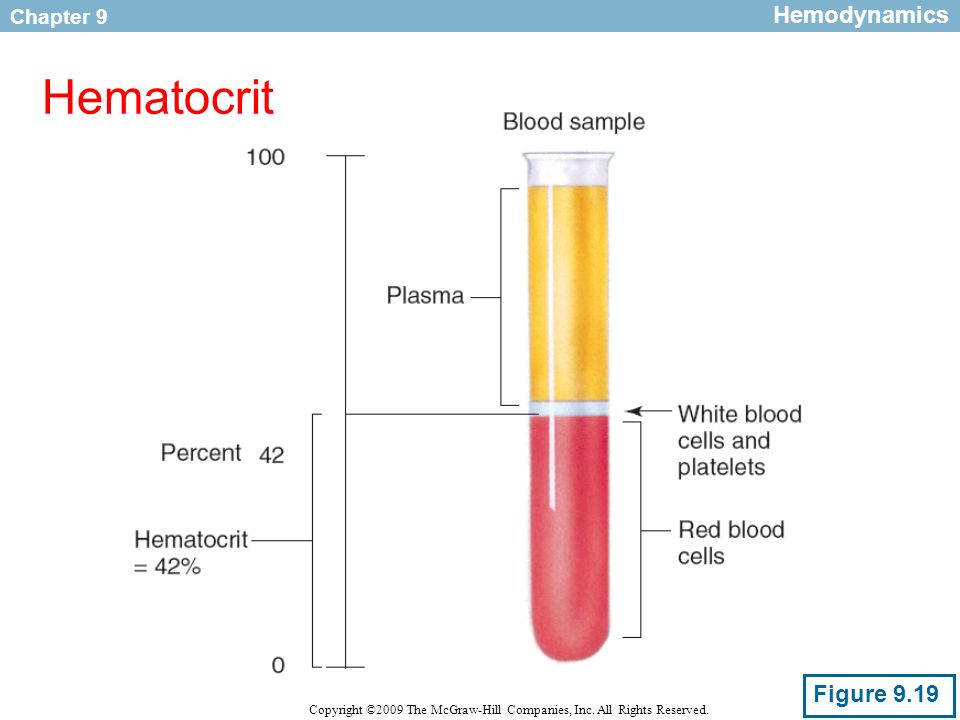 There is no evidence that anemia increases the risk of congenital malformations of the fetus.
There is no evidence that anemia increases the risk of congenital malformations of the fetus.
Severe chronic anemia is usually associated with insufficient iron stores (due to insufficient dietary intake or intestinal worm infestations), folate deficiency (due to insufficient intake and chronic hemolytic conditions such as malaria). Thus, prevention of chronic anemia and improvement of pregnancy outcome is possible with the use of nutritional supplements and the use of infection control measures.
Administering blood and packed red cell transfusions (where safe blood transfusion is available) is a reasonable aggressive treatment for severe anemia, especially if there are signs of fetal hypoxia.
Signs of physiological anemia of pregnancy disappear 6 weeks after delivery, when plasma volume returns to normal.
Iron requirement
In a singleton pregnancy, the iron requirement is 1000 mg per pregnancy: approximately 300 mg for the fetus and placenta and approximately 500 mg, if any, to increase hemoglobin. 200 mg is lost through the intestines, urine and skin. Since most women do not have an adequate supply of iron to meet their needs during pregnancy, iron is usually prescribed as part of a multivitamin, or as a separate element. In general, women taking iron supplements have a 1 g/dL higher hemoglobin concentration than women not taking iron.
200 mg is lost through the intestines, urine and skin. Since most women do not have an adequate supply of iron to meet their needs during pregnancy, iron is usually prescribed as part of a multivitamin, or as a separate element. In general, women taking iron supplements have a 1 g/dL higher hemoglobin concentration than women not taking iron.
Folate requirements
The daily folate requirement for non-pregnant women is 50-100 micrograms. An increase in the number of red blood cells during pregnancy leads to an increase in the need for folic acid, which is provided by increasing the dose of folic acid to 400-800 mcg per day, to prevent neural tube defects in the fetus.
Platelets during pregnancy
In most cases, the platelet count during uncomplicated pregnancy remains within the normal range for non-pregnant women, but it is also possible for pregnant women to have lower platelet counts compared to healthy non-pregnant women. The platelet count begins to rise immediately after childbirth and continues to increase for 3-4 weeks until it returns to normal values.
Thrombocytopenia in pregnancy
The most important obstetrical change in platelet physiology during pregnancy is thrombocytopenia, which may be associated with pregnancy complications (severe preeclampsia, HELLP syndrome), drug disorders (immune thrombocytopenia) or may be gestational thrombocytopenia.
Gestational or occasional thrombocytopenia is asymptomatic in the third trimester of pregnancy in patients without prior thrombocytopenia. It is not associated with maternal, fetal, or neonatal complications and resolves spontaneously after delivery. 99/l. The white blood cell count drops to the reference range for non-pregnant women by the sixth day after birth.
Pregnant women may have a small number of myelocytes and metamyelocytes in the peripheral blood. According to some studies, there is an increase in the number of young forms of neutrophils during pregnancy. Lobe bodies (blue staining of cytoplasmic inclusions in granulocytes) are considered normal in pregnant women.
In healthy women during uncomplicated pregnancy, there is no change in the absolute number of lymphocytes and there are no significant changes in the relative number of T- and B-lymphocytes. The number of monocytes usually does not change, the number of basophils may decrease slightly, and the number of eosinophils may increase slightly.
Coagulation factors and inhibitors
During normal pregnancy, the following changes in clotting factor levels occur, leading to physiological hypercoagulation:
- Due to hormonal changes during pregnancy, the activity of total protein S antigen, free protein S antigen and protein S is reduced.
- Activated protein C resistance increases in the second and third trimesters. These changes have been identified in first-generation tests using pure blood plasma (i.e., not lacking factor V), but this test is rarely used clinically and is of only historical interest.
- Fibrinogen and factors II, VII, VIII, X, XII and XIII are increased by 20-200%.

- Von Willebrand factor rises.
- Increased activity of fibrinolysis inhibitors, TAF1, PAI-1 and PAI-2. The level of PAI-1 also increases markedly.
- Levels of antithrombin III, protein C, factor V and factor IX most often remain unchanged or increase slightly.
The end result of these changes is an increase in the tendency to thrombosis, an increase in the likelihood of venous thrombosis during pregnancy and, especially, in the postpartum period. Along with contraction of the myometrium and an increase in the level of decidual tissue factor, hypercoagulability protects the pregnant woman from excessive bleeding during labor and delivery of the placenta.
APTT remains normal during pregnancy but may decrease slightly. Prothrombin time may be shortened. Bleeding time does not change.
The timing of normalization of blood clotting activity in the postpartum period may vary depending on factors, but everything should return to normal within 6-8 weeks after delivery. The hemostasiogram should not be assessed earlier than 3 months after delivery and after lactation is completed to exclude the influence of pregnancy factors.
The hemostasiogram should not be assessed earlier than 3 months after delivery and after lactation is completed to exclude the influence of pregnancy factors.
The influence of acquired or inherited thrombophilia factors on pregnancy is an area for research.
Postpartum period
Hematological changes associated with pregnancy return to normal 6-8 weeks after delivery. The rate and nature of the normalization of changes associated with pregnancy, specific hematological parameters are described above in the section on each parameter.
Hematological complications during pregnancy
- Iron deficiency anemia.
- Thrombocytopenia.
- Neonatal alloimmune thrombocytopenia.
- Acquired hemophilia A.
- Venous thrombosis.
- Rh and non-Rh alloimmunization. For diagnosis, an analysis is carried out for Rh antibodies and anti-group antibodies.
- A manifestation of a previously unrecognized coagulation disorder, such as von Willebrand disease, most commonly manifests in women during pregnancy and childbirth.
 For screening for von Willebrand disease, an assay is given to assess platelet aggregation with ristocetin.
For screening for von Willebrand disease, an assay is given to assess platelet aggregation with ristocetin. - Aplastic anemia.
Other articles in this section
ToRCH infections and pregnancy
What are ToRCH infections, what are the dangers of these infections during pregnancy, how and when is the examination performed, how to interpret the results. Perinatal infections account for approximately 2-3% of all congenital fetal anomalies.
Pregnancy Tests at CIR Laboratories
In our laboratory, you can undergo a complete examination in the event of pregnancy, take tests at any time, and in our clinics you can conclude an agreement on pregnancy management.
Pregnancy hCG calculator online
The hCG calculator is used to calculate the increase in hCG (the difference between two tests taken at different times).
The increase in hCG is important for assessing the development of pregnancy.
 Normally, in the early stages of pregnancy, hCG increases by about 2 times every two days. As the hormone levels increase, the rate of increase decreases.
Normally, in the early stages of pregnancy, hCG increases by about 2 times every two days. As the hormone levels increase, the rate of increase decreases.False positive pregnancy test or why hCG is positive but not pregnant?
When can a pregnancy test be positive?
The norm of hCG during pregnancy. Table of hCG values by week. Elevated HCG. Low HCG. HCG in ectopic pregnancy. hCG during IVF (hCG after replanting, hCG at 14 dpo).
hCG or beta-hCG or total hCG – human chorionic gonadotropin – a hormone produced during pregnancy. HCG is formed by the placenta, which nourishes the fetus after fertilization and implantation (attachment to the wall of the uterus).
Risk assessment of pregnancy complications using prenatal screening
Prenatal screening data allow assessing not only the risks of congenital pathology, but also the risk of other pregnancy complications: intrauterine fetal death, late toxicosis, intrauterine hypoxia, etc.

Parvovirus B19 and parvovirus infection: what you need to know when planning and getting pregnant.
What is a parvovirus infection, how is the virus transmitted, who can get sick, what is the danger of the virus during pregnancy, what tests are taken for diagnosis.
Pregnancy planning
Obstetrics differs from other specialties in that during the physiological course of pregnancy and childbirth, in principle, it is not part of medicine (the science of treating diseases), but is part of hygiene (the science of maintaining health). Examination during pregnancy planning.
1st and 2nd trimester prenatal screening (“double”, “triple” and “quadruple” tests)
Prenatal screening are tests conducted on pregnant women to identify risk groups for pregnancy complications.
Testosterone during pregnancy. Androgens: their formation and metabolism during normal pregnancy.
 Hyperandrogenism during pregnancy. “Male” hormones during pregnancy.
Hyperandrogenism during pregnancy. “Male” hormones during pregnancy.During pregnancy, the level of testosterone and other androgens changes. The change in these levels depends, among other things, on the sex of the fetus.
All articles of the section
Reticulocytes (blood level determination)
SKU: 00310
Cost of analysis
in the online store: 7% discount!
Plain
456rub
Express
911 rubles
Lab:
Regular
490rub
Express
980 rubles
the cost is indicated without taking into account the cost of sampling biological material
Add to Basket
Analysis results ready
Regular*: same day (subject to return before 12.00)
Analysis submission date:
Completion date:
*excluding the day of delivery, see rules.
Express
Where and when you can rent
- Buninskaya alley
- Voykovskaya
- Dubrovka
- Maryino
- Novokuznetskaya
- Podolsk
- Weekdays: from 7.



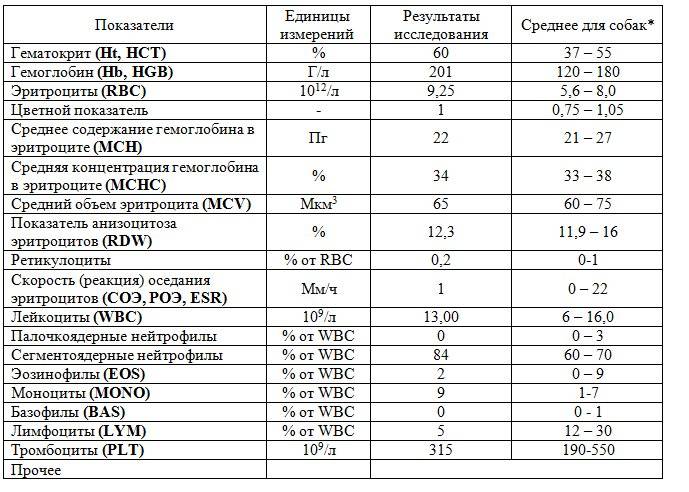 Smoking, excessive alcohol, and use of diuretics are contributory.[4]
Smoking, excessive alcohol, and use of diuretics are contributory.[4]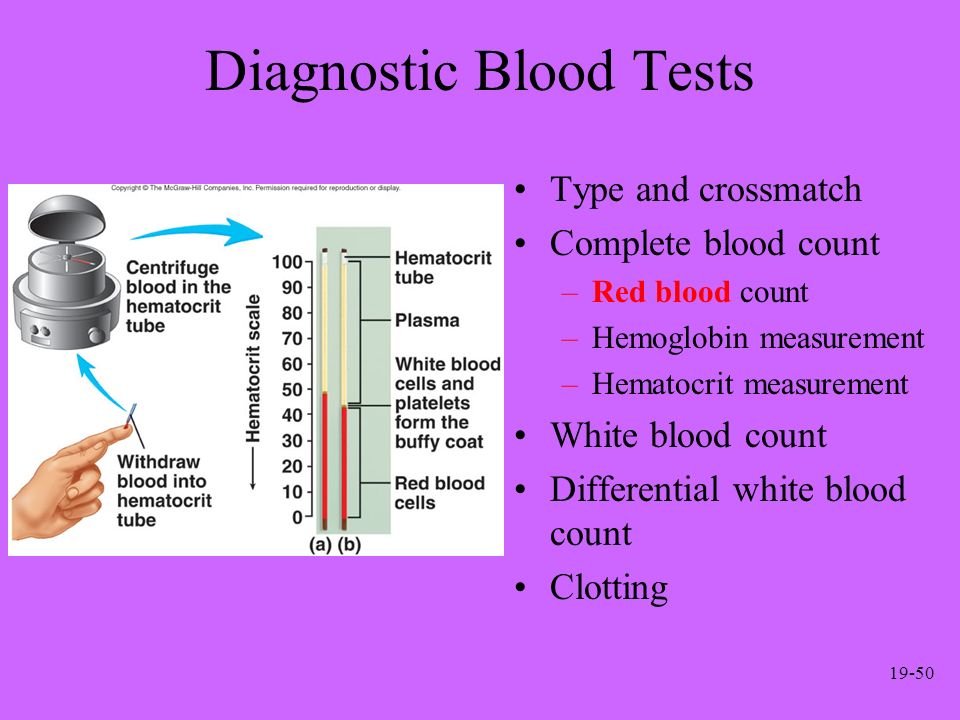 It is exacerbated by the high affinity of fetal hemoglobin for oxygen.
It is exacerbated by the high affinity of fetal hemoglobin for oxygen.

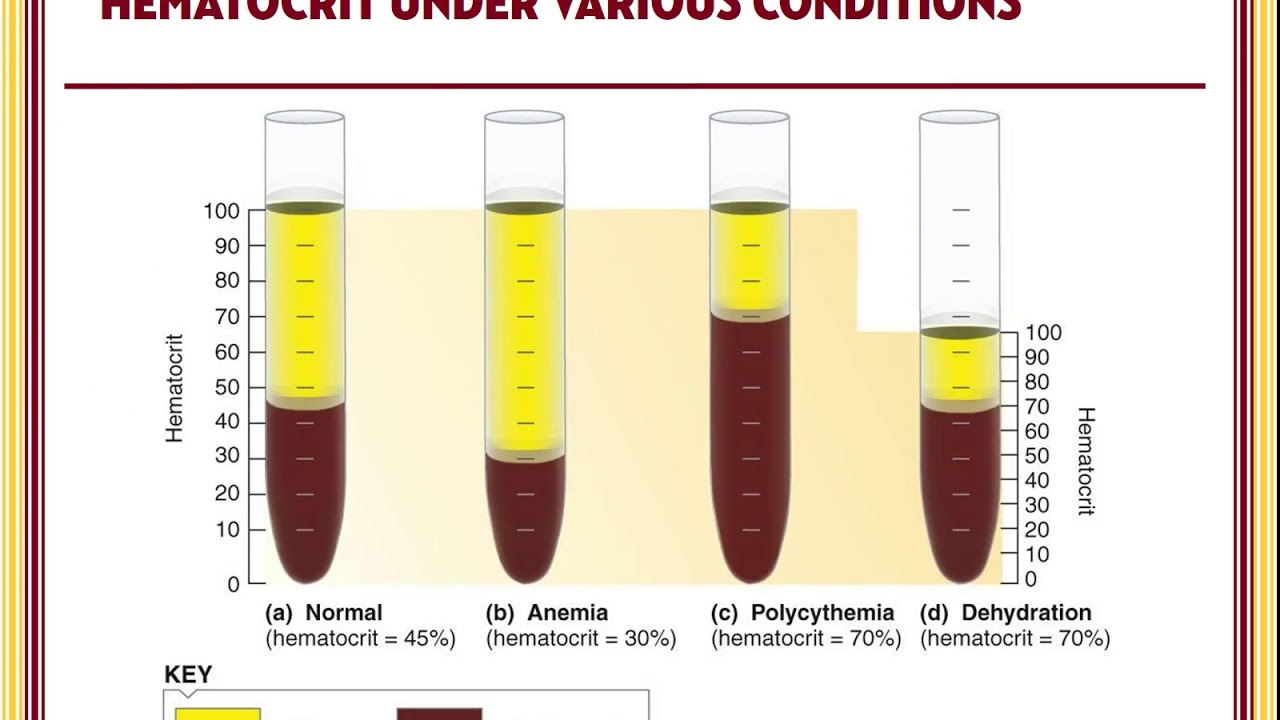 Therapeutic recommendations in polycythemia vera based on Polycythemia Vera Study Group protocols. Semin Hematol. 1986 Apr;23(2):132-43. [PubMed: 3704665]
Therapeutic recommendations in polycythemia vera based on Polycythemia Vera Study Group protocols. Semin Hematol. 1986 Apr;23(2):132-43. [PubMed: 3704665] Survival and prognosis among 1545 patients with contemporary polycythemia vera: an international study. Leukemia. 2013 Sep;27(9):1874-81. [PMC free article: PMC3768558] [PubMed: 23739289]
Survival and prognosis among 1545 patients with contemporary polycythemia vera: an international study. Leukemia. 2013 Sep;27(9):1874-81. [PMC free article: PMC3768558] [PubMed: 23739289] N Engl J Med. 2018 Mar 29;378(13):1200-1210. [PubMed: 29527974]
N Engl J Med. 2018 Mar 29;378(13):1200-1210. [PubMed: 29527974] Am Health Drug Benefits. 2014 Oct;7(7 Suppl 3):S36-47. [PMC free article: PMC4639938] [PubMed: 26568781]
Am Health Drug Benefits. 2014 Oct;7(7 Suppl 3):S36-47. [PMC free article: PMC4639938] [PubMed: 26568781]

 Very severe anemia is defined as a hemoglobin level of less than 40 g/L and is a medical emergency due to the risk of congestive heart failure.
Very severe anemia is defined as a hemoglobin level of less than 40 g/L and is a medical emergency due to the risk of congestive heart failure.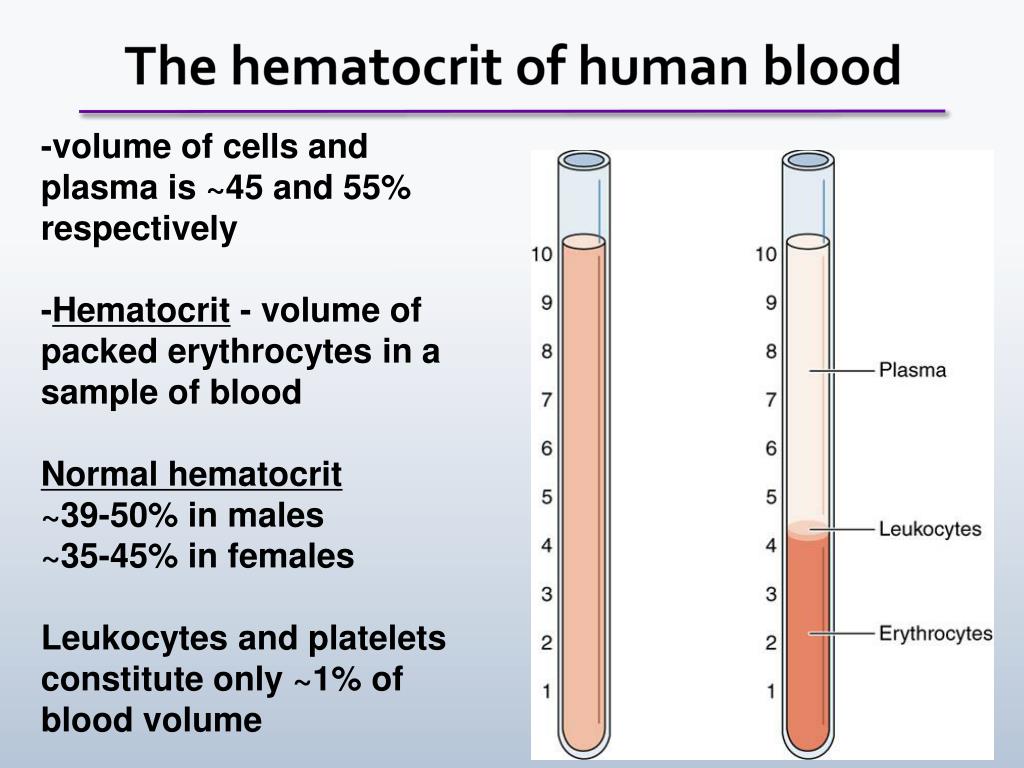
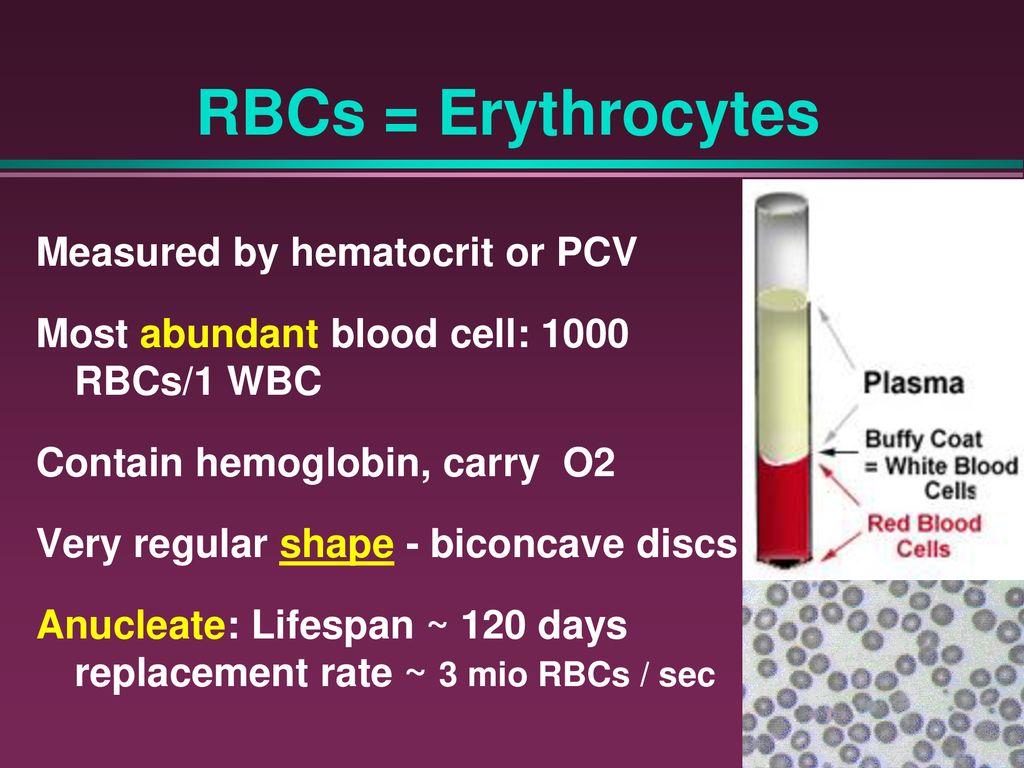 For screening for von Willebrand disease, an assay is given to assess platelet aggregation with ristocetin.
For screening for von Willebrand disease, an assay is given to assess platelet aggregation with ristocetin.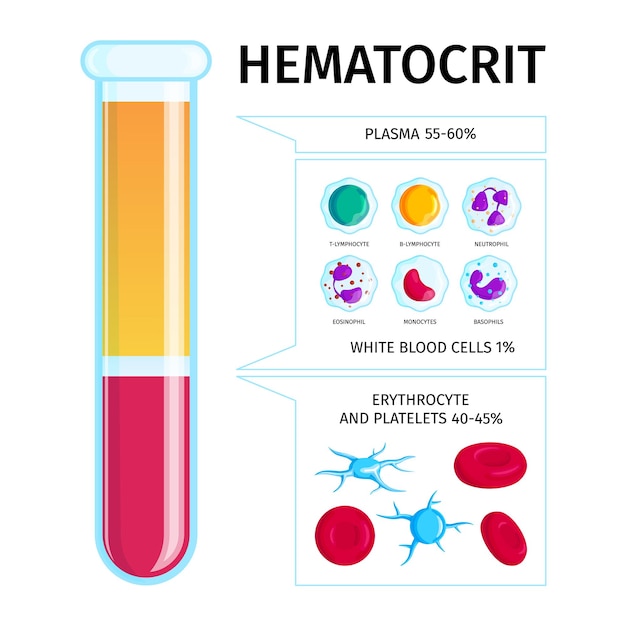 Normally, in the early stages of pregnancy, hCG increases by about 2 times every two days. As the hormone levels increase, the rate of increase decreases.
Normally, in the early stages of pregnancy, hCG increases by about 2 times every two days. As the hormone levels increase, the rate of increase decreases.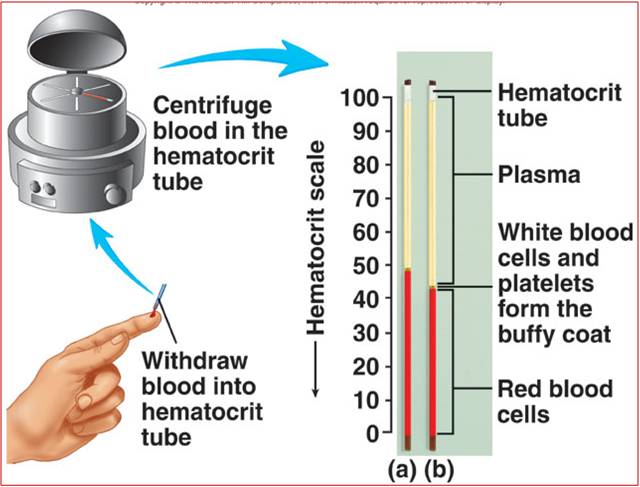
 Hyperandrogenism during pregnancy. “Male” hormones during pregnancy.
Hyperandrogenism during pregnancy. “Male” hormones during pregnancy.